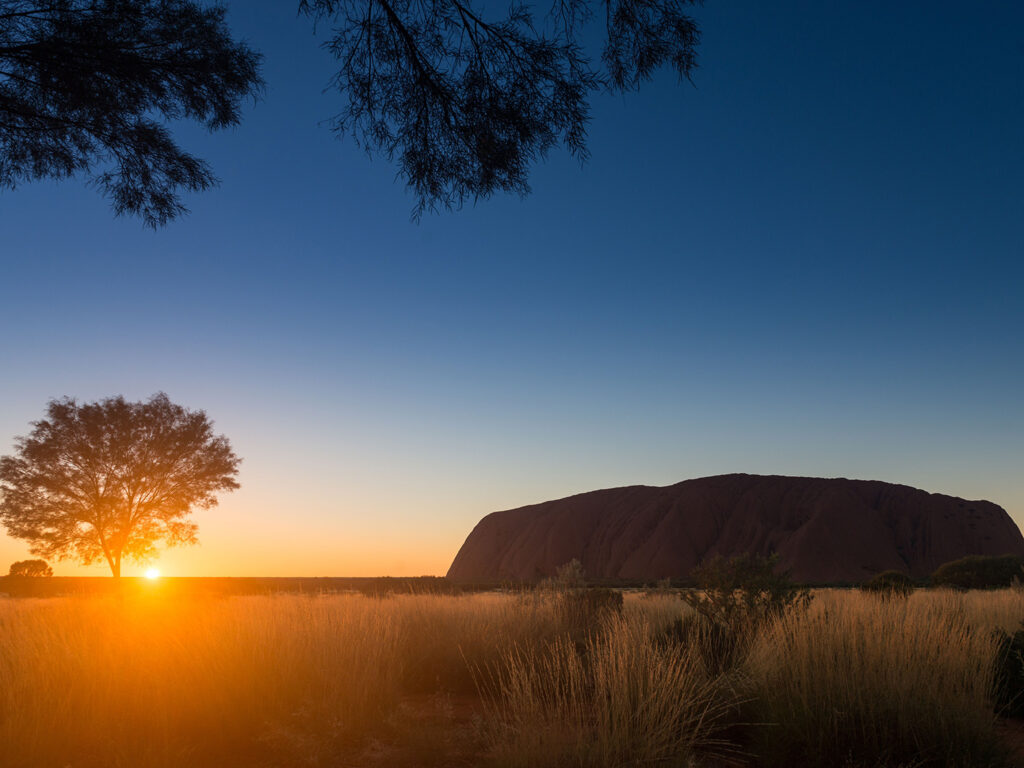
Discovering the Diversity of Northern Territory Parks
Australia’s Northern Territory is home to breathtaking natural wonders and the rich traditions of one of the world’s oldest living cultures. This part of the country is famed for its striking landscapes, ranging from the towering eucalyptus trees of the open forests and woodlands in the Top End to the spinifex grasslands and ochre sands of the Red Centre. A visit here means exploring a mosaic of ecosystems, from floodplain grasslands to the red-earthed Outback, each with its own unique flora and fauna. The diverse ecosystems and rich culture of the Northern Territory draw travellers from around the world who come here not just to witness the natural beauty, but also to learn from the people and hear their stories.
Top National Parks in the Northern Territory
Kakadu National Park: A UNESCO World Heritage Site
Kakadu National Park is one of the largest national parks in the Northern Territory and a UNESCO World Heritage Site. It’s a vast sanctuary with rich Aboriginal cultural heritage and breathtaking natural beauty. The park is world-renowned for its ancient rock art sites, which offer a window into tens of thousands of years of Indigenous storytelling and spirituality. Here, you can see striking emerald pools and birdlife-rich wetlands, where the landscape shifts with the seasons. Kakadu’s diverse habitats shelter an extraordinary array of wildlife, including the formidable saltwater crocodile and over 280 species of birds, making it the perfect place for nature lovers and those interested in learning about culture.
Litchfield National Park: Waterfalls and Swimmable Waterholes
Litchfield National Park is famous for its spectacular waterfalls and cool swimming holes. It is an ideal spot for family outings, wildlife viewing and a cooling dip in a natural waterhole or pool.
Nitmiluk National Park: Awe-Inspiring Gorges and Cultural Cruises
Located close to the town of Katherine in the Northern Territory, Nitmiluk National Park features breathtaking gorges carved over millennia. These landscapes can be explored on guided tours, with activities including sunrise or sunset river cruises along Nitmiluk (Katherine) Gorge, guided by the traditional owners – the Jawoyn people.
Uluru-Kata Tjuta National Park
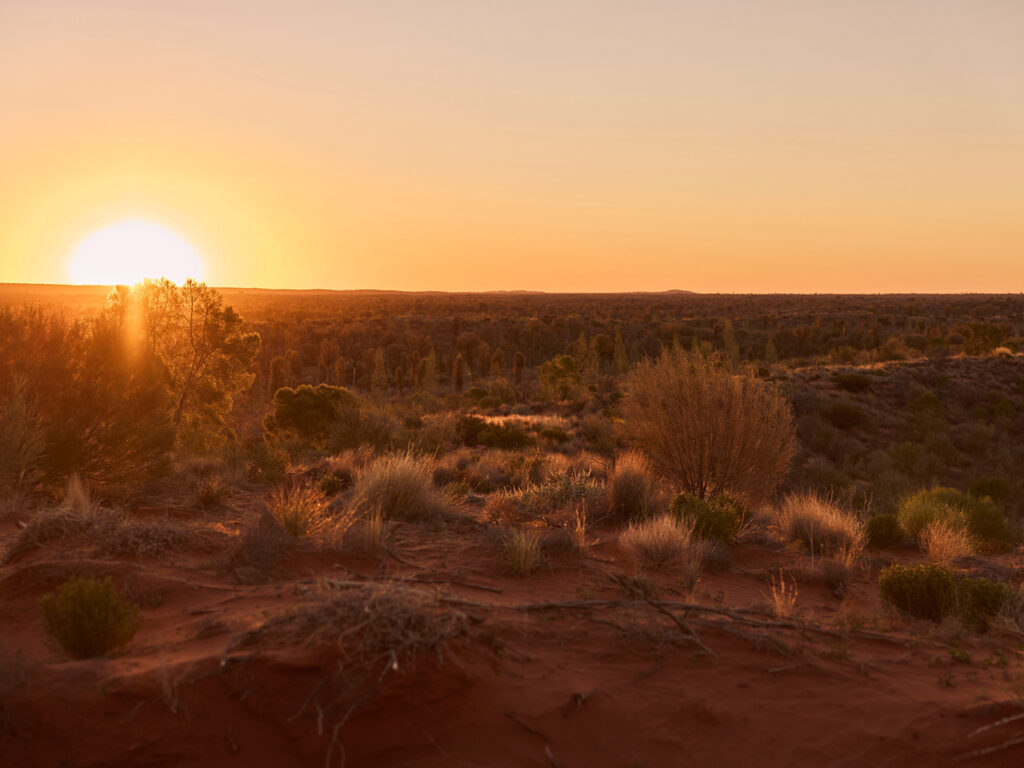
Uluru-Kata Tjuta National Park is one of the most iconic destinations in the Northern Territory, home to the world-famous sandstone monolith, Uluru, and the majestic domes of Kata Tjuta. This UNESCO World Heritage-listed park offers cultural and natural significance, with many tours guided by Traditional Owners and local experts. SEIT Tours offers a range of small-group experiences here, including Uluru sunrise and sunset tours, Kata Tjuta tours and immersive walks that provide deep insight into the area’s cultural and spiritual importance.
Simpsons Gap – Tjoritja / West MacDonnell National Park
Located just a short drive from Alice Springs, Simpsons Gap is one of the standout attractions in Tjoritja / West MacDonnell National Park. Known for its towering cliffs, scenic walking trails, and resident black-footed rock wallabies, it’s a peaceful and picturesque spot for day trips and nature walks. The park offers a range of short and long hikes such as the famed Larapinta Trail, ideal for travellers looking to explore the rugged outback landscapes of central Australia.
Watarrka National Park (Kings Canyon)
Watarrka National Park, home to the spectacular Kings Canyon, is a top destination for hiking and adventure in the Northern Territory. The famous Rim Walk (6 km) offers panoramic views of sandstone cliffs, lush crevices, and ancient cycads in the Garden of Eden. Whether you’re after a challenging hike or a more leisurely stroll through the canyon floor, Kings Canyon delivers unforgettable scenery and a strong sense of connection to the land’s geological and cultural history.
Cultural and Historical Significance of Northern Territory Parks
Indigenous Australian Connection to the Land
The parks of the Northern Territory are not only remarkable for their natural beauty but also for their deep cultural and historical roots. Indigenous Australian culture is profoundly connected to the land, with traditions passed down through generations that reflect a deep spiritual relationship with nature. This connection is expressed through storytelling and ancient rock art found throughout the region. These elements serve as living records of Aboriginal history and their connection to Country, offering invaluable insights into one of the world’s oldest continuous cultures. You’ll take home learnings to last a lifetime on an interactive small group tour with us. Accompanied by one of our expert guides, they will share the meaning and significance of these ancient places with you.
Conservation Efforts for Biodiversity and Cultural Heritage
Preserving this precious heritage requires dedicated and ongoing conservation efforts. Both national and local authorities play a vital role in safeguarding the region’s unique biodiversity and ensuring that sacred cultural sites remain protected. These strategies are carefully designed not only to conserve the fragile ecosystems that thrive in these diverse environments but also to protect sacred sites. Through these efforts, the Northern Territory parks continue to serve as living landscapes preserved for future generations to experience and learn from.
Must-See Attractions in Northern Territory
The allure of the Northern Territory’s parks lies in their breathtaking landscapes, sacred sites and beautiful walks. From towering waterfalls to ancient cultural landmarks, this region is packed with unforgettable experiences for every type of traveller.
Uluru
Few places are as spiritually powerful and visually striking as Uluru. Witness this ancient monolith’s changing colours at sunrise and sunset when it glows deep red, orange, and purple against the desert sky. Explore the base walk and visit the Muṯitjulu Waterhole, a serene site rich in Anangu stories and culture. Along the trail, discover ancient rock art that gives insight into thousands of years of Aboriginal history.
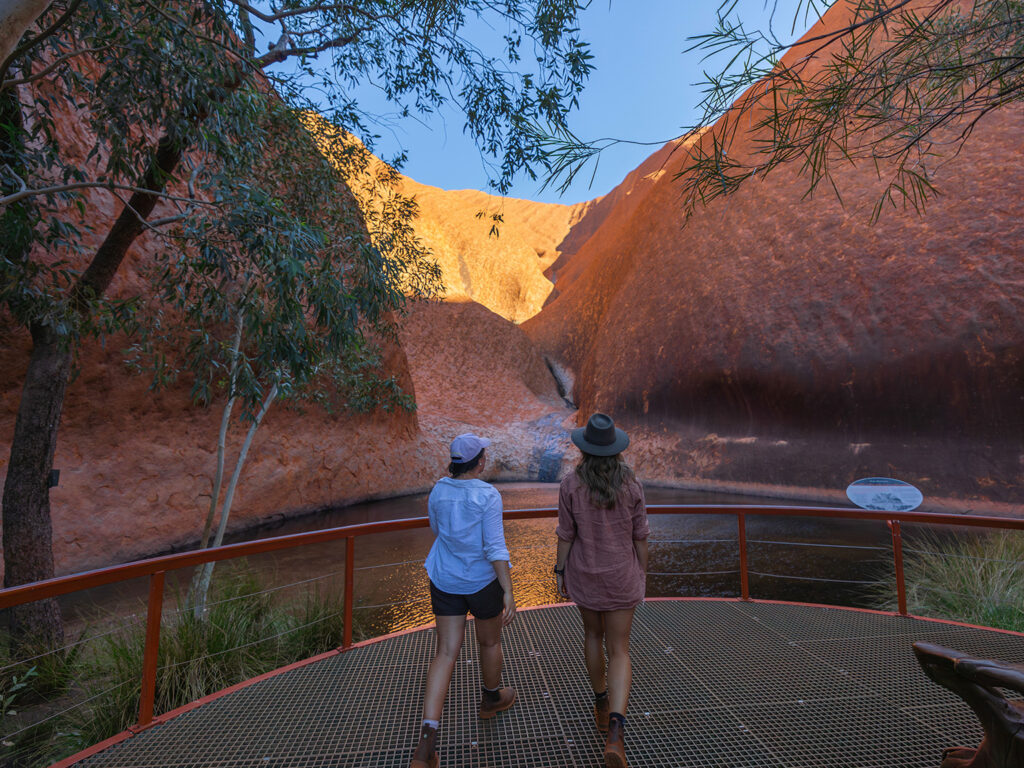
Kata Tjuta
Just 50 km from Uluru, Kata Tjuta offers a different but equally stunning landscape made up of 36 domed rock formations. Hike through Walpa Gorge, a rocky passage between towering walls, or take on the challenging but rewarding Valley of the Winds Walk for panoramic views and a deeper connection to this sacred site.
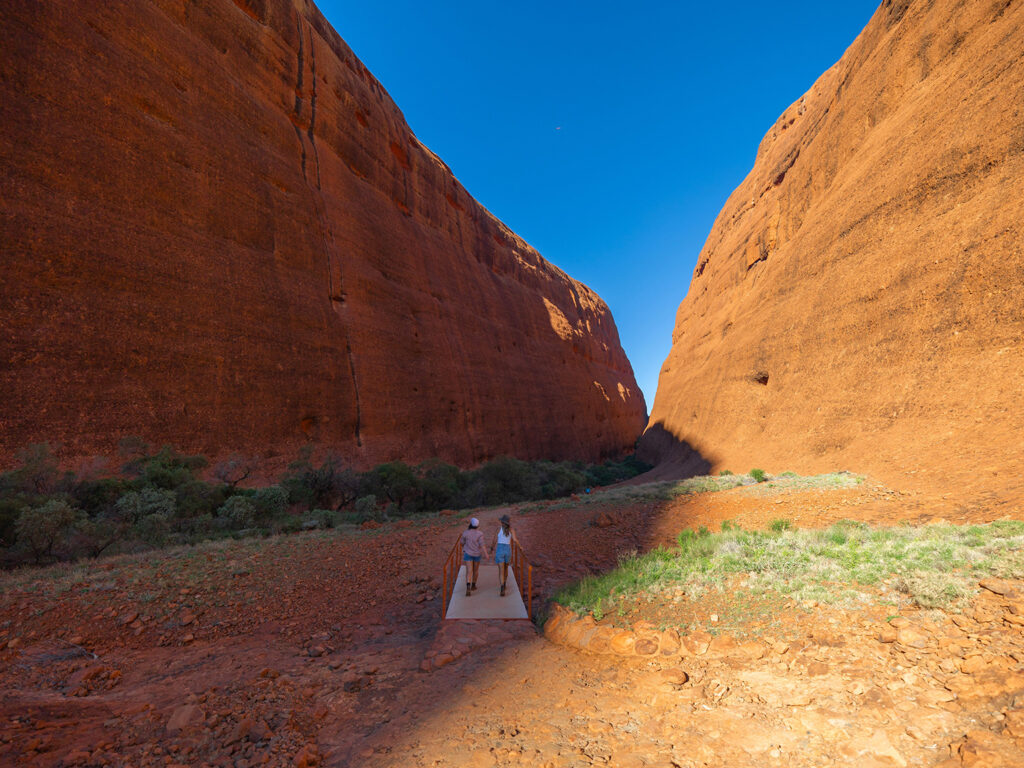
Jim Jim Falls in Kakadu National Park
Imagine standing before the majestic Jim Jim Falls, where powerful torrents of water plunge into deep pools surrounded by towering cliffs – an awe-inspiring sight, especially during the wet season.
Hidden Gems: Fogg Dam Conservation Reserve
Beyond the headline attractions, lesser-known sites like Fogg Dam Conservation Reserve offer serenity and rich biodiversity. It’s a paradise for birdwatchers and wildlife enthusiasts, home to a variety of wetland species year-round.
Adventure Activities in Northern Territory National Parks
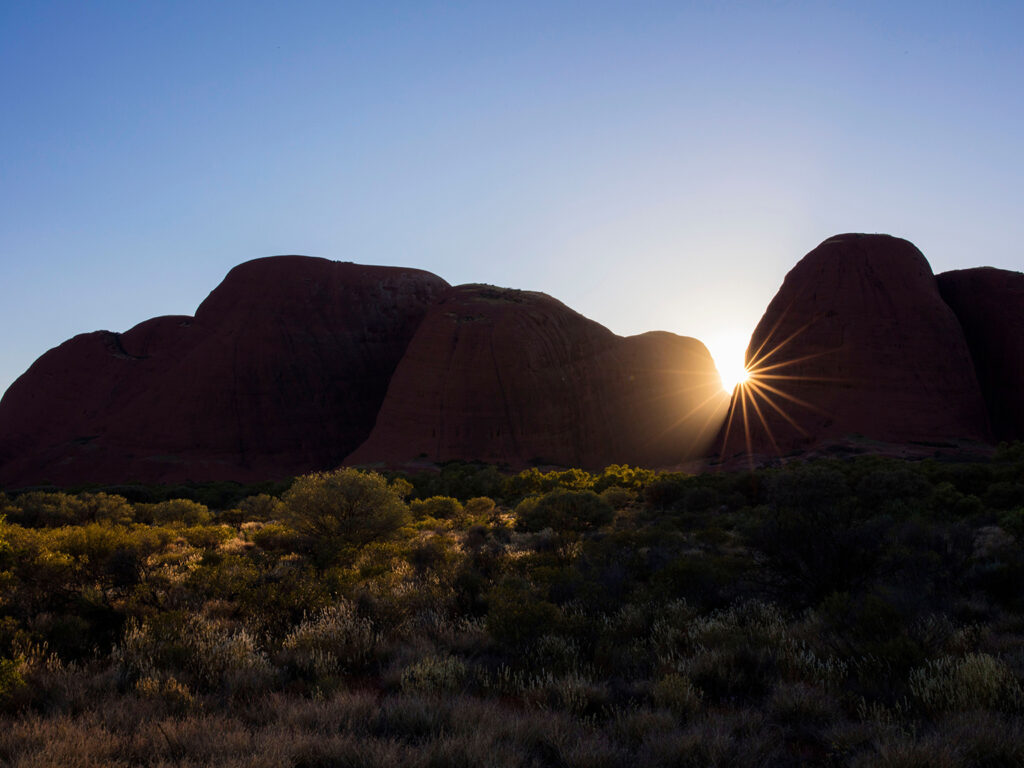
Depending on the time of year, the Northern Territory offers a wide variety of adventures:
- Wet Season Cruises: Glide past sunbathing crocodiles on boat tours through floodplains and rivers
- Dry Season Hikes: Embark on trails that weave through ancient rock formations and scenic overlooks. Go on a guided sunrise or sunset walk around Uluru, hike through Kings Canyon and discover Kata Tjuta on a Walpa Gorge or Valley of the Winds walk.
- Waterfalls and Waterholes: While exploring Litchfield National Park, don’t forget to pack your swimwear for a dip in the crystal-clear pools beneath plunging waterfalls for a scenic swim (in designated areas outside of Wet Season).
When planning your journey, choosing the right tour or activity can make all the difference in creating a meaningful and memorable experience. Whether you’re travelling as a family or simply looking for a more relaxed and enriching way to explore, joining a small group experience allows you to connect more deeply with the Northern Territory’s incredible landscapes and culture.
Our interactive small group tours will make you feel fully immersed in these special places, from iconic sites like Uluru and Kata Tjuta to lesser-known cultural treasures. Led by a specialist SEIT Guide, each experience offers the chance to hear the stories of this land, gain a true connection to culture, and leave with a deeper understanding and appreciation of the people and places you’ve encountered.
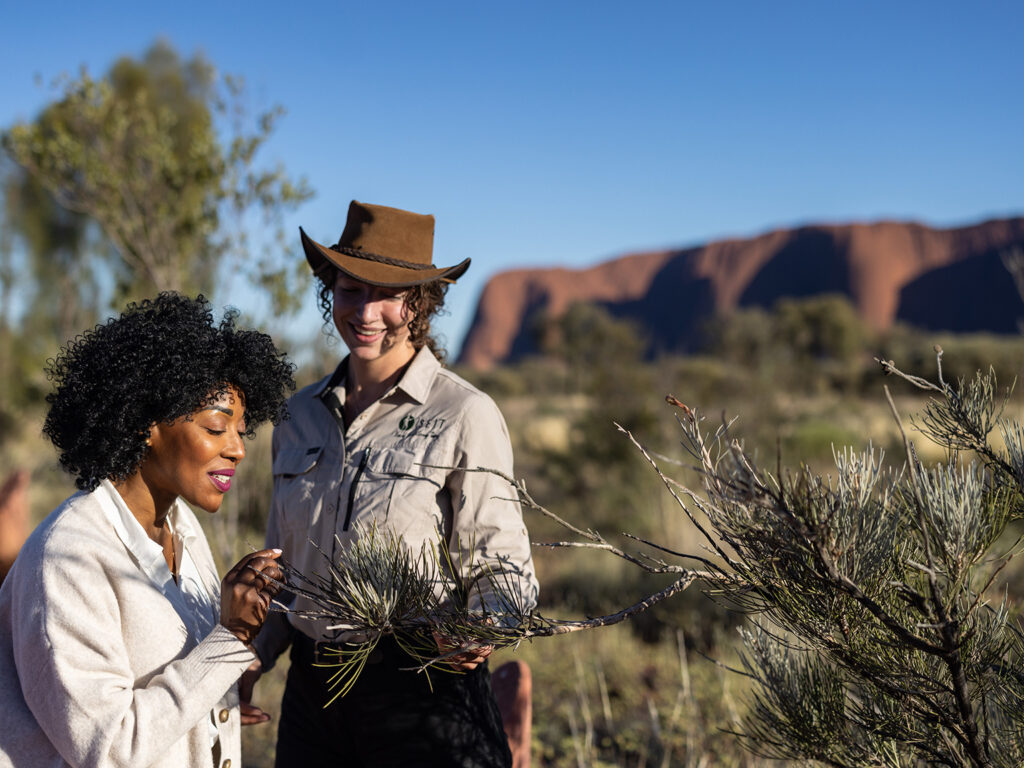
Encountering Northern Territory Wildlife
While the landscapes of the Northern Territory’s national parks are undeniably breathtaking, it’s the diverse native Australian wildlife that often captivates visitors.
From saltwater crocodiles basking on Kakadu’s riverbanks to kangaroos hopping across open plains, the region showcases the richness of Australia’s natural heritage. In the Red Centre, you might spot unique desert-dwelling creatures such as the fascinating thorny devil lizard, perentie goannas, or even the shy mala (rufous hare-wallaby). In the Top End, birdwatchers are rewarded with sightings of vibrant species such as the rainbow bee-eater and the towering jabiru (black-necked stork), especially in the wetland regions.
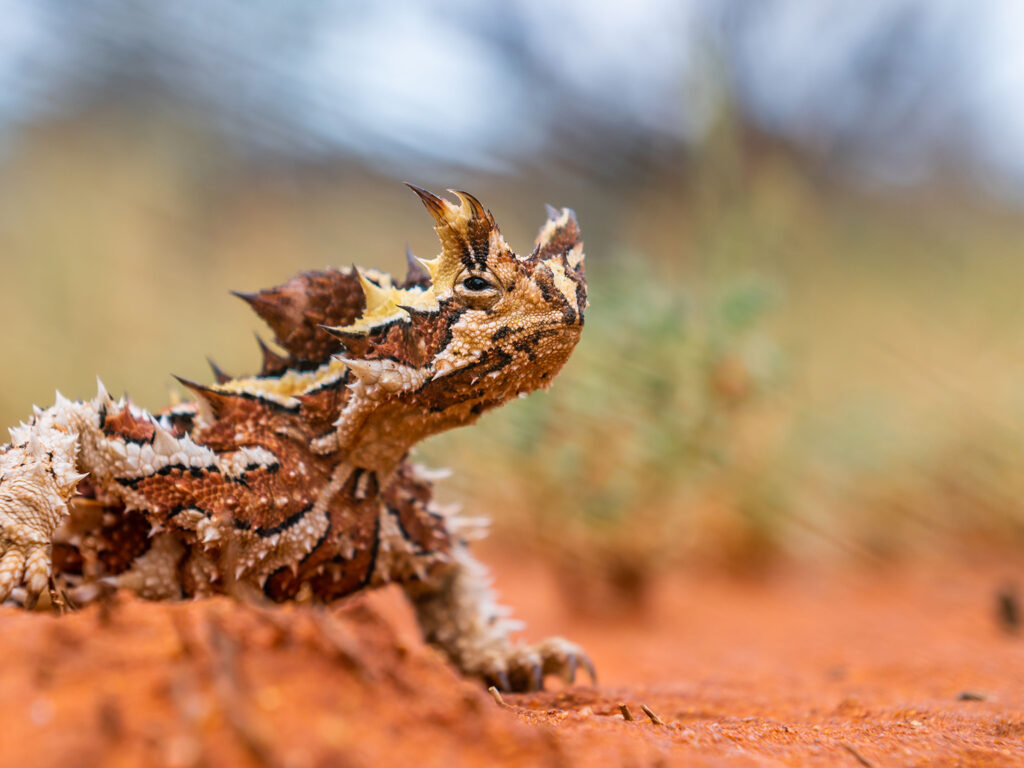
How to Enjoy Safe and Respectful Wildlife Encounters
Observing wildlife in the Northern Territory comes with responsibilities. Tourists should:
- Keep a safe distance from all animals
- Refrain from feeding or disturbing wildlife
- Follow local guidelines and signage
- Consider joining ranger-led activities or-guided tours to enhance understanding and safety
Engaging with expert guides ensures a deeper connection with the ecosystems and supports sustainable tourism practices.
Top Wildlife Education and Conservation Parks in Northern Territory
Alice Springs Desert Park
The Alice Springs Desert Park offers immersive exhibits and natural habitats that showcase desert-adapted species. It’s a hub for education on Aboriginal culture, desert ecology, and the role of wildlife in outback environments.
Territory Wildlife Park: Conservation Meets Experience
The Territory Wildlife Park, located near Darwin, provides close-up encounters with native animals in a naturalistic setting, from birds of prey to marsupials. It plays a vital role in:
- Wildlife conservation
- Public education
- Supporting endangered species recovery
Visiting these parks contributes directly to ongoing conservation efforts in the Northern Territory and offers enriching, family-friendly experiences.
Top Tips for a Successful Exploration
Planning a trip to the Northern Territory of Australia involves more than just picking a destination – it requires careful preparation to make the most of its wild, remote beauty. From choosing the right time to visit to practicing responsible tourism, the right approach can transform your adventure into an unforgettable experience.
1. Best Time to Visit the Northern Territory
The dry season, spans from May to October in the Northern Territory. During these months, temperatures are comfortable for hiking and outdoor activities, and the roads and trails are generally more accessible. Clear skies also mean better opportunities for photography and wildlife spotting. During the wet season, from November to April, the region is transformed and blanketed with lush greenery and waterfalls flow in full force.
2.What to Pack for Outback Travel
A few carefully selected essentials can greatly enhance your experience in the Northern Territory’s remote landscapes. The outback’s extreme temperatures, unpredictable terrain, and isolation mean preparation is key, not just for comfort, but also for safety.
- Sun protection: A wide-brimmed hat, high-SPF sunscreen, and UV-blocking sunglasses are non-negotiable in the harsh desert sun.
- Hydration gear: Carry at least one reusable water bottle per person – or better yet, a hydration pack – especially on longer hikes where refill points may be scarce.
- Sturdy footwear: Invest in durable walking or hiking shoes with good grip to handle rocky paths and uneven trails.
- First-aid kit: A compact kit with antiseptic, bandages, pain relievers, and any personal medications ensures you’re ready for minor injuries.
- Insect repellent and fly net: Especially important in wetter areas or during warmer months when bugs are more active.
- Layered clothing: Desert temperatures can swing dramatically between day and night, so bring light, breathable layers for daytime and a warm jacket for cooler evenings.
Packing smart ensures not only your safety but also allows you to fully immerse yourself in the rugged beauty of the outback without unnecessary setbacks.
3.Staying Safe in Remote Wilderness Areas
Navigating remote areas of the Northern Territory calls for extra attention to safety. Before setting off on any hike or tour, let someone know your itinerary, especially if you’re exploring less-travelled paths and bring water with you. Booking a tour with a local guide adds both security and depth to your journey – they offer regional expertise and can reveal hidden highlights you might otherwise miss.
Practicing Sustainable and Respectful Tourism
Sustainable travel is vital to preserving the Northern Territory’s ecosystems and indigenous heritage. Travellers are encouraged to minimise their environmental impact by reducing waste, sticking to designated trails, and respecting all wildlife. Supporting Aboriginal-owned tours and local businesses not only enriches your experience but also helps sustain the culture and economy of the communities who have cared for these lands for tens of thousands of years.
**FAQ Section**
What animals live in the Northern Territory?
The Northern Territory is home to a remarkable range of wildlife. Iconic species include saltwater and freshwater crocodiles, kangaroos, emus, dingoes, and a dazzling array of bird species like the hooded parrot and Gouldian finch, which are particularly popular with birdwatchers.
How can I explore the Northern Territory sustainably?
To explore sustainably, respect local customs and wildlife, reduce your waste by using reusable items, and support Indigenous businesses to relay economic benefits to local communities.
Are there guided tours available in Northern Territory parks?
Yes, guided tours are available in many Northern Territory parks. SEIT Tours offers a variety of guided tours across the Northern Territory, with a strong focus on small-group, immersive experiences. The tours include Uluru and Kata Tjuta experiences. Whether you’re interested in local culture, natural landmarks, or personalised storytelling, SEIT provides a unique and respectful way to explore the Red Centre.
What is the best time of year to visit the Northern Territory for optimal wildlife viewing?
The dry season, from May to October, is generally the best time for wildlife viewing, as animals tend to be more visible around water sources and the weather is more conducive to exploration. During wet season, from November to April, waterfalls are at their most spectacular, rivers swell with rain, and the landscape transforms with more greenery.
Are the Northern Territory parks family-friendly?
Yes, many of the parks in the Northern Territory are family-friendly and offer a range of activities suitable for all ages, including guided walks, interactive cultural experiences, swimming spots, and more, ensuring an enriching experience for visitors of all ages.
